-
EXECUTIVE SUMMARY
-
Market Overview
-
Key Findings
-
Market Segmentation
-
Competitive Landscape
-
Challenges and Opportunities
-
Future Outlook
-
MARKET INTRODUCTION
-
Definition
-
Scope of the study
- Research Objective
- Assumption
- Limitations
-
RESEARCH METHODOLOGY
-
Overview
-
Data Mining
-
Secondary Research
-
Primary Research
- Primary Interviews and Information Gathering Process
- Breakdown of Primary Respondents
-
Forecasting Model
-
Market Size Estimation
- Bottom-Up Approach
- Top-Down Approach
-
Data Triangulation
-
Validation
-
MARKET DYNAMICS
-
Overview
-
Drivers
-
Restraints
-
Opportunities
-
MARKET FACTOR ANALYSIS
-
Value chain Analysis
-
Porter''s Five Forces Analysis
- Bargaining Power of Suppliers
- Bargaining Power of Buyers
- Threat of New Entrants
- Threat of Substitutes
- Intensity of Rivalry
-
COVID-19 Impact Analysis
- Market Impact Analysis
- Regional Impact
- Opportunity and Threat Analysis
-
TRANSCATHETER EMBOLIZATION AND OCCLUSION DEVICES MARKET, BY DEVICE TYPE (USD BILLION)
-
Coils
-
Particles
-
Gels
-
Liquid Embolic Agents
-
TRANSCATHETER EMBOLIZATION AND OCCLUSION DEVICES MARKET, BY APPLICATION (USD BILLION)
-
Uterine Artery Embolization
-
Tumor Embolization
-
Devascularization Procedures
-
Hemorrhage Control
-
TRANSCATHETER EMBOLIZATION AND OCCLUSION DEVICES MARKET, BY END USER (USD BILLION)
-
Hospitals
-
Ambulatory Surgical Centers
-
Specialized Clinics
-
TRANSCATHETER EMBOLIZATION AND OCCLUSION DEVICES MARKET, BY TECHNIQUE (USD BILLION)
-
Transcatheter Embolization
-
Surgical Embolization
-
TRANSCATHETER EMBOLIZATION AND OCCLUSION DEVICES MARKET, BY REGIONAL (USD BILLION)
-
North America
- US
- Canada
-
Europe
- Germany
- UK
- France
- Russia
- Italy
- Spain
- Rest of Europe
-
APAC
- China
- India
- Japan
- South Korea
- Malaysia
- Thailand
- Indonesia
- Rest of APAC
-
South America
- Brazil
- Mexico
- Argentina
- Rest of South America
-
MEA
- GCC Countries
- South Africa
- Rest of MEA
-
COMPETITIVE LANDSCAPE
-
Overview
-
Competitive Analysis
-
Market share Analysis
-
Major Growth Strategy in the Transcatheter Embolization and Occlusion Devices Market
-
Competitive Benchmarking
-
Leading Players in Terms of Number of Developments in the Transcatheter Embolization and Occlusion Devices Market
-
Key developments and growth strategies
- New Product Launch/Service Deployment
- Merger & Acquisitions
- Joint Ventures
-
Major Players Financial Matrix
- Sales and Operating Income
- Major Players R&D Expenditure. 2023
-
COMPANY PROFILES
-
Stryker Corporation
- Financial Overview
- Products Offered
- Key Developments
- SWOT Analysis
- Key Strategies
-
Cook Medical
- Financial Overview
- Products Offered
- Key Developments
- SWOT Analysis
- Key Strategies
-
Asahi Intecc
- Financial Overview
- Products Offered
- Key Developments
- SWOT Analysis
- Key Strategies
-
MicroVention
- Financial Overview
- Products Offered
- Key Developments
- SWOT Analysis
- Key Strategies
-
B. Braun Melsungen
- Financial Overview
- Products Offered
- Key Developments
- SWOT Analysis
- Key Strategies
-
Abbott Laboratories
- Financial Overview
- Products Offered
- Key Developments
- SWOT Analysis
- Key Strategies
-
Boston Scientific
- Financial Overview
- Products Offered
- Key Developments
- SWOT Analysis
- Key Strategies
-
Johnson and Johnson
- Financial Overview
- Products Offered
- Key Developments
- SWOT Analysis
- Key Strategies
-
EndoShape
- Financial Overview
- Products Offered
- Key Developments
- SWOT Analysis
- Key Strategies
-
Thomas Medical
- Financial Overview
- Products Offered
- Key Developments
- SWOT Analysis
- Key Strategies
-
C.R. Bard
- Financial Overview
- Products Offered
- Key Developments
- SWOT Analysis
- Key Strategies
-
Medtronic
- Financial Overview
- Products Offered
- Key Developments
- SWOT Analysis
- Key Strategies
-
Penumbra
- Financial Overview
- Products Offered
- Key Developments
- SWOT Analysis
- Key Strategies
-
MediGus
- Financial Overview
- Products Offered
- Key Developments
- SWOT Analysis
- Key Strategies
-
Terumo Corporation
- Financial Overview
- Products Offered
- Key Developments
- SWOT Analysis
- Key Strategies
-
APPENDIX
-
References
-
Related Reports
-
LIST OF TABLES
-
LIST OF ASSUMPTIONS
-
NORTH AMERICA TRANSCATHETER EMBOLIZATION AND OCCLUSION DEVICES MARKET SIZE ESTIMATES & FORECAST, BY DEVICE TYPE, 2019-2032 (USD BILLIONS)
-
NORTH AMERICA TRANSCATHETER EMBOLIZATION AND OCCLUSION DEVICES MARKET SIZE ESTIMATES & FORECAST, BY APPLICATION, 2019-2032 (USD BILLIONS)
-
NORTH AMERICA TRANSCATHETER EMBOLIZATION AND OCCLUSION DEVICES MARKET SIZE ESTIMATES & FORECAST, BY END USER, 2019-2032 (USD BILLIONS)
-
NORTH AMERICA TRANSCATHETER EMBOLIZATION AND OCCLUSION DEVICES MARKET SIZE ESTIMATES & FORECAST, BY TECHNIQUE, 2019-2032 (USD BILLIONS)
-
NORTH AMERICA TRANSCATHETER EMBOLIZATION AND OCCLUSION DEVICES MARKET SIZE ESTIMATES & FORECAST, BY REGIONAL, 2019-2032 (USD BILLIONS)
-
US TRANSCATHETER EMBOLIZATION AND OCCLUSION DEVICES MARKET SIZE ESTIMATES & FORECAST, BY DEVICE TYPE, 2019-2032 (USD BILLIONS)
-
US TRANSCATHETER EMBOLIZATION AND OCCLUSION DEVICES MARKET SIZE ESTIMATES & FORECAST, BY APPLICATION, 2019-2032 (USD BILLIONS)
-
US TRANSCATHETER EMBOLIZATION AND OCCLUSION DEVICES MARKET SIZE ESTIMATES & FORECAST, BY END USER, 2019-2032 (USD BILLIONS)
-
US TRANSCATHETER EMBOLIZATION AND OCCLUSION DEVICES MARKET SIZE ESTIMATES & FORECAST, BY TECHNIQUE, 2019-2032 (USD BILLIONS)
-
US TRANSCATHETER EMBOLIZATION AND OCCLUSION DEVICES MARKET SIZE ESTIMATES & FORECAST, BY REGIONAL, 2019-2032 (USD BILLIONS)
-
CANADA TRANSCATHETER EMBOLIZATION AND OCCLUSION DEVICES MARKET SIZE ESTIMATES & FORECAST, BY DEVICE TYPE, 2019-2032 (USD BILLIONS)
-
CANADA TRANSCATHETER EMBOLIZATION AND OCCLUSION DEVICES MARKET SIZE ESTIMATES & FORECAST, BY APPLICATION, 2019-2032 (USD BILLIONS)
-
CANADA TRANSCATHETER EMBOLIZATION AND OCCLUSION DEVICES MARKET SIZE ESTIMATES & FORECAST, BY END USER, 2019-2032 (USD BILLIONS)
-
CANADA TRANSCATHETER EMBOLIZATION AND OCCLUSION DEVICES MARKET SIZE ESTIMATES & FORECAST, BY TECHNIQUE, 2019-2032 (USD BILLIONS)
-
CANADA TRANSCATHETER EMBOLIZATION AND OCCLUSION DEVICES MARKET SIZE ESTIMATES & FORECAST, BY REGIONAL, 2019-2032 (USD BILLIONS)
-
EUROPE TRANSCATHETER EMBOLIZATION AND OCCLUSION DEVICES MARKET SIZE ESTIMATES & FORECAST, BY DEVICE TYPE, 2019-2032 (USD BILLIONS)
-
EUROPE TRANSCATHETER EMBOLIZATION AND OCCLUSION DEVICES MARKET SIZE ESTIMATES & FORECAST, BY APPLICATION, 2019-2032 (USD BILLIONS)
-
EUROPE TRANSCATHETER EMBOLIZATION AND OCCLUSION DEVICES MARKET SIZE ESTIMATES & FORECAST, BY END USER, 2019-2032 (USD BILLIONS)
-
EUROPE TRANSCATHETER EMBOLIZATION AND OCCLUSION DEVICES MARKET SIZE ESTIMATES & FORECAST, BY TECHNIQUE, 2019-2032 (USD BILLIONS)
-
EUROPE TRANSCATHETER EMBOLIZATION AND OCCLUSION DEVICES MARKET SIZE ESTIMATES & FORECAST, BY REGIONAL, 2019-2032 (USD BILLIONS)
-
GERMANY TRANSCATHETER EMBOLIZATION AND OCCLUSION DEVICES MARKET SIZE ESTIMATES & FORECAST, BY DEVICE TYPE, 2019-2032 (USD BILLIONS)
-
GERMANY TRANSCATHETER EMBOLIZATION AND OCCLUSION DEVICES MARKET SIZE ESTIMATES & FORECAST, BY APPLICATION, 2019-2032 (USD BILLIONS)
-
GERMANY TRANSCATHETER EMBOLIZATION AND OCCLUSION DEVICES MARKET SIZE ESTIMATES & FORECAST, BY END USER, 2019-2032 (USD BILLIONS)
-
GERMANY TRANSCATHETER EMBOLIZATION AND OCCLUSION DEVICES MARKET SIZE ESTIMATES & FORECAST, BY TECHNIQUE, 2019-2032 (USD BILLIONS)
-
GERMANY TRANSCATHETER EMBOLIZATION AND OCCLUSION DEVICES MARKET SIZE ESTIMATES & FORECAST, BY REGIONAL, 2019-2032 (USD BILLIONS)
-
UK TRANSCATHETER EMBOLIZATION AND OCCLUSION DEVICES MARKET SIZE ESTIMATES & FORECAST, BY DEVICE TYPE, 2019-2032 (USD BILLIONS)
-
UK TRANSCATHETER EMBOLIZATION AND OCCLUSION DEVICES MARKET SIZE ESTIMATES & FORECAST, BY APPLICATION, 2019-2032 (USD BILLIONS)
-
UK TRANSCATHETER EMBOLIZATION AND OCCLUSION DEVICES MARKET SIZE ESTIMATES & FORECAST, BY END USER, 2019-2032 (USD BILLIONS)
-
UK TRANSCATHETER EMBOLIZATION AND OCCLUSION DEVICES MARKET SIZE ESTIMATES & FORECAST, BY TECHNIQUE, 2019-2032 (USD BILLIONS)
-
UK TRANSCATHETER EMBOLIZATION AND OCCLUSION DEVICES MARKET SIZE ESTIMATES & FORECAST, BY REGIONAL, 2019-2032 (USD BILLIONS)
-
FRANCE TRANSCATHETER EMBOLIZATION AND OCCLUSION DEVICES MARKET SIZE ESTIMATES & FORECAST, BY DEVICE TYPE, 2019-2032 (USD BILLIONS)
-
FRANCE TRANSCATHETER EMBOLIZATION AND OCCLUSION DEVICES MARKET SIZE ESTIMATES & FORECAST, BY APPLICATION, 2019-2032 (USD BILLIONS)
-
FRANCE TRANSCATHETER EMBOLIZATION AND OCCLUSION DEVICES MARKET SIZE ESTIMATES & FORECAST, BY END USER, 2019-2032 (USD BILLIONS)
-
FRANCE TRANSCATHETER EMBOLIZATION AND OCCLUSION DEVICES MARKET SIZE ESTIMATES & FORECAST, BY TECHNIQUE, 2019-2032 (USD BILLIONS)
-
FRANCE TRANSCATHETER EMBOLIZATION AND OCCLUSION DEVICES MARKET SIZE ESTIMATES & FORECAST, BY REGIONAL, 2019-2032 (USD BILLIONS)
-
RUSSIA TRANSCATHETER EMBOLIZATION AND OCCLUSION DEVICES MARKET SIZE ESTIMATES & FORECAST, BY DEVICE TYPE, 2019-2032 (USD BILLIONS)
-
RUSSIA TRANSCATHETER EMBOLIZATION AND OCCLUSION DEVICES MARKET SIZE ESTIMATES & FORECAST, BY APPLICATION, 2019-2032 (USD BILLIONS)
-
RUSSIA TRANSCATHETER EMBOLIZATION AND OCCLUSION DEVICES MARKET SIZE ESTIMATES & FORECAST, BY END USER, 2019-2032 (USD BILLIONS)
-
RUSSIA TRANSCATHETER EMBOLIZATION AND OCCLUSION DEVICES MARKET SIZE ESTIMATES & FORECAST, BY TECHNIQUE, 2019-2032 (USD BILLIONS)
-
RUSSIA TRANSCATHETER EMBOLIZATION AND OCCLUSION DEVICES MARKET SIZE ESTIMATES & FORECAST, BY REGIONAL, 2019-2032 (USD BILLIONS)
-
ITALY TRANSCATHETER EMBOLIZATION AND OCCLUSION DEVICES MARKET SIZE ESTIMATES & FORECAST, BY DEVICE TYPE, 2019-2032 (USD BILLIONS)
-
ITALY TRANSCATHETER EMBOLIZATION AND OCCLUSION DEVICES MARKET SIZE ESTIMATES & FORECAST, BY APPLICATION, 2019-2032 (USD BILLIONS)
-
ITALY TRANSCATHETER EMBOLIZATION AND OCCLUSION DEVICES MARKET SIZE ESTIMATES & FORECAST, BY END USER, 2019-2032 (USD BILLIONS)
-
ITALY TRANSCATHETER EMBOLIZATION AND OCCLUSION DEVICES MARKET SIZE ESTIMATES & FORECAST, BY TECHNIQUE, 2019-2032 (USD BILLIONS)
-
ITALY TRANSCATHETER EMBOLIZATION AND OCCLUSION DEVICES MARKET SIZE ESTIMATES & FORECAST, BY REGIONAL, 2019-2032 (USD BILLIONS)
-
SPAIN TRANSCATHETER EMBOLIZATION AND OCCLUSION DEVICES MARKET SIZE ESTIMATES & FORECAST, BY DEVICE TYPE, 2019-2032 (USD BILLIONS)
-
SPAIN TRANSCATHETER EMBOLIZATION AND OCCLUSION DEVICES MARKET SIZE ESTIMATES & FORECAST, BY APPLICATION, 2019-2032 (USD BILLIONS)
-
SPAIN TRANSCATHETER EMBOLIZATION AND OCCLUSION DEVICES MARKET SIZE ESTIMATES & FORECAST, BY END USER, 2019-2032 (USD BILLIONS)
-
SPAIN TRANSCATHETER EMBOLIZATION AND OCCLUSION DEVICES MARKET SIZE ESTIMATES & FORECAST, BY TECHNIQUE, 2019-2032 (USD BILLIONS)
-
SPAIN TRANSCATHETER EMBOLIZATION AND OCCLUSION DEVICES MARKET SIZE ESTIMATES & FORECAST, BY REGIONAL, 2019-2032 (USD BILLIONS)
-
REST OF EUROPE TRANSCATHETER EMBOLIZATION AND OCCLUSION DEVICES MARKET SIZE ESTIMATES & FORECAST, BY DEVICE TYPE, 2019-2032 (USD BILLIONS)
-
REST OF EUROPE TRANSCATHETER EMBOLIZATION AND OCCLUSION DEVICES MARKET SIZE ESTIMATES & FORECAST, BY APPLICATION, 2019-2032 (USD BILLIONS)
-
REST OF EUROPE TRANSCATHETER EMBOLIZATION AND OCCLUSION DEVICES MARKET SIZE ESTIMATES & FORECAST, BY END USER, 2019-2032 (USD BILLIONS)
-
REST OF EUROPE TRANSCATHETER EMBOLIZATION AND OCCLUSION DEVICES MARKET SIZE ESTIMATES & FORECAST, BY TECHNIQUE, 2019-2032 (USD BILLIONS)
-
REST OF EUROPE TRANSCATHETER EMBOLIZATION AND OCCLUSION DEVICES MARKET SIZE ESTIMATES & FORECAST, BY REGIONAL, 2019-2032 (USD BILLIONS)
-
APAC TRANSCATHETER EMBOLIZATION AND OCCLUSION DEVICES MARKET SIZE ESTIMATES & FORECAST, BY DEVICE TYPE, 2019-2032 (USD BILLIONS)
-
APAC TRANSCATHETER EMBOLIZATION AND OCCLUSION DEVICES MARKET SIZE ESTIMATES & FORECAST, BY APPLICATION, 2019-2032 (USD BILLIONS)
-
APAC TRANSCATHETER EMBOLIZATION AND OCCLUSION DEVICES MARKET SIZE ESTIMATES & FORECAST, BY END USER, 2019-2032 (USD BILLIONS)
-
APAC TRANSCATHETER EMBOLIZATION AND OCCLUSION DEVICES MARKET SIZE ESTIMATES & FORECAST, BY TECHNIQUE, 2019-2032 (USD BILLIONS)
-
APAC TRANSCATHETER EMBOLIZATION AND OCCLUSION DEVICES MARKET SIZE ESTIMATES & FORECAST, BY REGIONAL, 2019-2032 (USD BILLIONS)
-
CHINA TRANSCATHETER EMBOLIZATION AND OCCLUSION DEVICES MARKET SIZE ESTIMATES & FORECAST, BY DEVICE TYPE, 2019-2032 (USD BILLIONS)
-
CHINA TRANSCATHETER EMBOLIZATION AND OCCLUSION DEVICES MARKET SIZE ESTIMATES & FORECAST, BY APPLICATION, 2019-2032 (USD BILLIONS)
-
CHINA TRANSCATHETER EMBOLIZATION AND OCCLUSION DEVICES MARKET SIZE ESTIMATES & FORECAST, BY END USER, 2019-2032 (USD BILLIONS)
-
CHINA TRANSCATHETER EMBOLIZATION AND OCCLUSION DEVICES MARKET SIZE ESTIMATES & FORECAST, BY TECHNIQUE, 2019-2032 (USD BILLIONS)
-
CHINA TRANSCATHETER EMBOLIZATION AND OCCLUSION DEVICES MARKET SIZE ESTIMATES & FORECAST, BY REGIONAL, 2019-2032 (USD BILLIONS)
-
INDIA TRANSCATHETER EMBOLIZATION AND OCCLUSION DEVICES MARKET SIZE ESTIMATES & FORECAST, BY DEVICE TYPE, 2019-2032 (USD BILLIONS)
-
INDIA TRANSCATHETER EMBOLIZATION AND OCCLUSION DEVICES MARKET SIZE ESTIMATES & FORECAST, BY APPLICATION, 2019-2032 (USD BILLIONS)
-
INDIA TRANSCATHETER EMBOLIZATION AND OCCLUSION DEVICES MARKET SIZE ESTIMATES & FORECAST, BY END USER, 2019-2032 (USD BILLIONS)
-
INDIA TRANSCATHETER EMBOLIZATION AND OCCLUSION DEVICES MARKET SIZE ESTIMATES & FORECAST, BY TECHNIQUE, 2019-2032 (USD BILLIONS)
-
INDIA TRANSCATHETER EMBOLIZATION AND OCCLUSION DEVICES MARKET SIZE ESTIMATES & FORECAST, BY REGIONAL, 2019-2032 (USD BILLIONS)
-
JAPAN TRANSCATHETER EMBOLIZATION AND OCCLUSION DEVICES MARKET SIZE ESTIMATES & FORECAST, BY DEVICE TYPE, 2019-2032 (USD BILLIONS)
-
JAPAN TRANSCATHETER EMBOLIZATION AND OCCLUSION DEVICES MARKET SIZE ESTIMATES & FORECAST, BY APPLICATION, 2019-2032 (USD BILLIONS)
-
JAPAN TRANSCATHETER EMBOLIZATION AND OCCLUSION DEVICES MARKET SIZE ESTIMATES & FORECAST, BY END USER, 2019-2032 (USD BILLIONS)
-
JAPAN TRANSCATHETER EMBOLIZATION AND OCCLUSION DEVICES MARKET SIZE ESTIMATES & FORECAST, BY TECHNIQUE, 2019-2032 (USD BILLIONS)
-
JAPAN TRANSCATHETER EMBOLIZATION AND OCCLUSION DEVICES MARKET SIZE ESTIMATES & FORECAST, BY REGIONAL, 2019-2032 (USD BILLIONS)
-
SOUTH KOREA TRANSCATHETER EMBOLIZATION AND OCCLUSION DEVICES MARKET SIZE ESTIMATES & FORECAST, BY DEVICE TYPE, 2019-2032 (USD BILLIONS)
-
SOUTH KOREA TRANSCATHETER EMBOLIZATION AND OCCLUSION DEVICES MARKET SIZE ESTIMATES & FORECAST, BY APPLICATION, 2019-2032 (USD BILLIONS)
-
SOUTH KOREA TRANSCATHETER EMBOLIZATION AND OCCLUSION DEVICES MARKET SIZE ESTIMATES & FORECAST, BY END USER, 2019-2032 (USD BILLIONS)
-
SOUTH KOREA TRANSCATHETER EMBOLIZATION AND OCCLUSION DEVICES MARKET SIZE ESTIMATES & FORECAST, BY TECHNIQUE, 2019-2032 (USD BILLIONS)
-
SOUTH KOREA TRANSCATHETER EMBOLIZATION AND OCCLUSION DEVICES MARKET SIZE ESTIMATES & FORECAST, BY REGIONAL, 2019-2032 (USD BILLIONS)
-
MALAYSIA TRANSCATHETER EMBOLIZATION AND OCCLUSION DEVICES MARKET SIZE ESTIMATES & FORECAST, BY DEVICE TYPE, 2019-2032 (USD BILLIONS)
-
MALAYSIA TRANSCATHETER EMBOLIZATION AND OCCLUSION DEVICES MARKET SIZE ESTIMATES & FORECAST, BY APPLICATION, 2019-2032 (USD BILLIONS)
-
MALAYSIA TRANSCATHETER EMBOLIZATION AND OCCLUSION DEVICES MARKET SIZE ESTIMATES & FORECAST, BY END USER, 2019-2032 (USD BILLIONS)
-
MALAYSIA TRANSCATHETER EMBOLIZATION AND OCCLUSION DEVICES MARKET SIZE ESTIMATES & FORECAST, BY TECHNIQUE, 2019-2032 (USD BILLIONS)
-
MALAYSIA TRANSCATHETER EMBOLIZATION AND OCCLUSION DEVICES MARKET SIZE ESTIMATES & FORECAST, BY REGIONAL, 2019-2032 (USD BILLIONS)
-
THAILAND TRANSCATHETER EMBOLIZATION AND OCCLUSION DEVICES MARKET SIZE ESTIMATES & FORECAST, BY DEVICE TYPE, 2019-2032 (USD BILLIONS)
-
THAILAND TRANSCATHETER EMBOLIZATION AND OCCLUSION DEVICES MARKET SIZE ESTIMATES & FORECAST, BY APPLICATION, 2019-2032 (USD BILLIONS)
-
THAILAND TRANSCATHETER EMBOLIZATION AND OCCLUSION DEVICES MARKET SIZE ESTIMATES & FORECAST, BY END USER, 2019-2032 (USD BILLIONS)
-
THAILAND TRANSCATHETER EMBOLIZATION AND OCCLUSION DEVICES MARKET SIZE ESTIMATES & FORECAST, BY TECHNIQUE, 2019-2032 (USD BILLIONS)
-
THAILAND TRANSCATHETER EMBOLIZATION AND OCCLUSION DEVICES MARKET SIZE ESTIMATES & FORECAST, BY REGIONAL, 2019-2032 (USD BILLIONS)
-
INDONESIA TRANSCATHETER EMBOLIZATION AND OCCLUSION DEVICES MARKET SIZE ESTIMATES & FORECAST, BY DEVICE TYPE, 2019-2032 (USD BILLIONS)
-
INDONESIA TRANSCATHETER EMBOLIZATION AND OCCLUSION DEVICES MARKET SIZE ESTIMATES & FORECAST, BY APPLICATION, 2019-2032 (USD BILLIONS)
-
INDONESIA TRANSCATHETER EMBOLIZATION AND OCCLUSION DEVICES MARKET SIZE ESTIMATES & FORECAST, BY END USER, 2019-2032 (USD BILLIONS)
-
INDONESIA TRANSCATHETER EMBOLIZATION AND OCCLUSION DEVICES MARKET SIZE ESTIMATES & FORECAST, BY TECHNIQUE, 2019-2032 (USD BILLIONS)
-
INDONESIA TRANSCATHETER EMBOLIZATION AND OCCLUSION DEVICES MARKET SIZE ESTIMATES & FORECAST, BY REGIONAL, 2019-2032 (USD BILLIONS)
-
REST OF APAC TRANSCATHETER EMBOLIZATION AND OCCLUSION DEVICES MARKET SIZE ESTIMATES & FORECAST, BY DEVICE TYPE, 2019-2032 (USD BILLIONS)
-
REST OF APAC TRANSCATHETER EMBOLIZATION AND OCCLUSION DEVICES MARKET SIZE ESTIMATES & FORECAST, BY APPLICATION, 2019-2032 (USD BILLIONS)
-
REST OF APAC TRANSCATHETER EMBOLIZATION AND OCCLUSION DEVICES MARKET SIZE ESTIMATES & FORECAST, BY END USER, 2019-2032 (USD BILLIONS)
-
REST OF APAC TRANSCATHETER EMBOLIZATION AND OCCLUSION DEVICES MARKET SIZE ESTIMATES & FORECAST, BY TECHNIQUE, 2019-2032 (USD BILLIONS)
-
REST OF APAC TRANSCATHETER EMBOLIZATION AND OCCLUSION DEVICES MARKET SIZE ESTIMATES & FORECAST, BY REGIONAL, 2019-2032 (USD BILLIONS)
-
SOUTH AMERICA TRANSCATHETER EMBOLIZATION AND OCCLUSION DEVICES MARKET SIZE ESTIMATES & FORECAST, BY DEVICE TYPE, 2019-2032 (USD BILLIONS)
-
SOUTH AMERICA TRANSCATHETER EMBOLIZATION AND OCCLUSION DEVICES MARKET SIZE ESTIMATES & FORECAST, BY APPLICATION, 2019-2032 (USD BILLIONS)
-
SOUTH AMERICA TRANSCATHETER EMBOLIZATION AND OCCLUSION DEVICES MARKET SIZE ESTIMATES & FORECAST, BY END USER, 2019-2032 (USD BILLIONS)
-
SOUTH AMERICA TRANSCATHETER EMBOLIZATION AND OCCLUSION DEVICES MARKET SIZE ESTIMATES & FORECAST, BY TECHNIQUE, 2019-2032 (USD BILLIONS)
-
SOUTH AMERICA TRANSCATHETER EMBOLIZATION AND OCCLUSION DEVICES MARKET SIZE ESTIMATES & FORECAST, BY REGIONAL, 2019-2032 (USD BILLIONS)
-
BRAZIL TRANSCATHETER EMBOLIZATION AND OCCLUSION DEVICES MARKET SIZE ESTIMATES & FORECAST, BY DEVICE TYPE, 2019-2032 (USD BILLIONS)
-
BRAZIL TRANSCATHETER EMBOLIZATION AND OCCLUSION DEVICES MARKET SIZE ESTIMATES & FORECAST, BY APPLICATION, 2019-2032 (USD BILLIONS)
-
BRAZIL TRANSCATHETER EMBOLIZATION AND OCCLUSION DEVICES MARKET SIZE ESTIMATES & FORECAST, BY END USER, 2019-2032 (USD BILLIONS)
-
BRAZIL TRANSCATHETER EMBOLIZATION AND OCCLUSION DEVICES MARKET SIZE ESTIMATES & FORECAST, BY TECHNIQUE, 2019-2032 (USD BILLIONS)
-
BRAZIL TRANSCATHETER EMBOLIZATION AND OCCLUSION DEVICES MARKET SIZE ESTIMATES & FORECAST, BY REGIONAL, 2019-2032 (USD BILLIONS)
-
MEXICO TRANSCATHETER EMBOLIZATION AND OCCLUSION DEVICES MARKET SIZE ESTIMATES & FORECAST, BY DEVICE TYPE, 2019-2032 (USD BILLIONS)
-
MEXICO TRANSCATHETER EMBOLIZATION AND OCCLUSION DEVICES MARKET SIZE ESTIMATES & FORECAST, BY APPLICATION, 2019-2032 (USD BILLIONS)
-
MEXICO TRANSCATHETER EMBOLIZATION AND OCCLUSION DEVICES MARKET SIZE ESTIMATES & FORECAST, BY END USER, 2019-2032 (USD BILLIONS)
-
MEXICO TRANSCATHETER EMBOLIZATION AND OCCLUSION DEVICES MARKET SIZE ESTIMATES & FORECAST, BY TECHNIQUE, 2019-2032 (USD BILLIONS)
-
MEXICO TRANSCATHETER EMBOLIZATION AND OCCLUSION DEVICES MARKET SIZE ESTIMATES & FORECAST, BY REGIONAL, 2019-2032 (USD BILLIONS)
-
ARGENTINA TRANSCATHETER EMBOLIZATION AND OCCLUSION DEVICES MARKET SIZE ESTIMATES & FORECAST, BY DEVICE TYPE, 2019-2032 (USD BILLIONS)
-
ARGENTINA TRANSCATHETER EMBOLIZATION AND OCCLUSION DEVICES MARKET SIZE ESTIMATES & FORECAST, BY APPLICATION, 2019-2032 (USD BILLIONS)
-
ARGENTINA TRANSCATHETER EMBOLIZATION AND OCCLUSION DEVICES MARKET SIZE ESTIMATES & FORECAST, BY END USER, 2019-2032 (USD BILLIONS)
-
ARGENTINA TRANSCATHETER EMBOLIZATION AND OCCLUSION DEVICES MARKET SIZE ESTIMATES & FORECAST, BY TECHNIQUE, 2019-2032 (USD BILLIONS)
-
ARGENTINA TRANSCATHETER EMBOLIZATION AND OCCLUSION DEVICES MARKET SIZE ESTIMATES & FORECAST, BY REGIONAL, 2019-2032 (USD BILLIONS)
-
REST OF SOUTH AMERICA TRANSCATHETER EMBOLIZATION AND OCCLUSION DEVICES MARKET SIZE ESTIMATES & FORECAST, BY DEVICE TYPE, 2019-2032 (USD BILLIONS)
-
REST OF SOUTH AMERICA TRANSCATHETER EMBOLIZATION AND OCCLUSION DEVICES MARKET SIZE ESTIMATES & FORECAST, BY APPLICATION, 2019-2032 (USD BILLIONS)
-
REST OF SOUTH AMERICA TRANSCATHETER EMBOLIZATION AND OCCLUSION DEVICES MARKET SIZE ESTIMATES & FORECAST, BY END USER, 2019-2032 (USD BILLIONS)
-
REST OF SOUTH AMERICA TRANSCATHETER EMBOLIZATION AND OCCLUSION DEVICES MARKET SIZE ESTIMATES & FORECAST, BY TECHNIQUE, 2019-2032 (USD BILLIONS)
-
REST OF SOUTH AMERICA TRANSCATHETER EMBOLIZATION AND OCCLUSION DEVICES MARKET SIZE ESTIMATES & FORECAST, BY REGIONAL, 2019-2032 (USD BILLIONS)
-
MEA TRANSCATHETER EMBOLIZATION AND OCCLUSION DEVICES MARKET SIZE ESTIMATES & FORECAST, BY DEVICE TYPE, 2019-2032 (USD BILLIONS)
-
MEA TRANSCATHETER EMBOLIZATION AND OCCLUSION DEVICES MARKET SIZE ESTIMATES & FORECAST, BY APPLICATION, 2019-2032 (USD BILLIONS)
-
MEA TRANSCATHETER EMBOLIZATION AND OCCLUSION DEVICES MARKET SIZE ESTIMATES & FORECAST, BY END USER, 2019-2032 (USD BILLIONS)
-
MEA TRANSCATHETER EMBOLIZATION AND OCCLUSION DEVICES MARKET SIZE ESTIMATES & FORECAST, BY TECHNIQUE, 2019-2032 (USD BILLIONS)
-
MEA TRANSCATHETER EMBOLIZATION AND OCCLUSION DEVICES MARKET SIZE ESTIMATES & FORECAST, BY REGIONAL, 2019-2032 (USD BILLIONS)
-
GCC COUNTRIES TRANSCATHETER EMBOLIZATION AND OCCLUSION DEVICES MARKET SIZE ESTIMATES & FORECAST, BY DEVICE TYPE, 2019-2032 (USD BILLIONS)
-
GCC COUNTRIES TRANSCATHETER EMBOLIZATION AND OCCLUSION DEVICES MARKET SIZE ESTIMATES & FORECAST, BY APPLICATION, 2019-2032 (USD BILLIONS)
-
GCC COUNTRIES TRANSCATHETER EMBOLIZATION AND OCCLUSION DEVICES MARKET SIZE ESTIMATES & FORECAST, BY END USER, 2019-2032 (USD BILLIONS)
-
GCC COUNTRIES TRANSCATHETER EMBOLIZATION AND OCCLUSION DEVICES MARKET SIZE ESTIMATES & FORECAST, BY TECHNIQUE, 2019-2032 (USD BILLIONS)
-
GCC COUNTRIES TRANSCATHETER EMBOLIZATION AND OCCLUSION DEVICES MARKET SIZE ESTIMATES & FORECAST, BY REGIONAL, 2019-2032 (USD BILLIONS)
-
SOUTH AFRICA TRANSCATHETER EMBOLIZATION AND OCCLUSION DEVICES MARKET SIZE ESTIMATES & FORECAST, BY DEVICE TYPE, 2019-2032 (USD BILLIONS)
-
SOUTH AFRICA TRANSCATHETER EMBOLIZATION AND OCCLUSION DEVICES MARKET SIZE ESTIMATES & FORECAST, BY APPLICATION, 2019-2032 (USD BILLIONS)
-
SOUTH AFRICA TRANSCATHETER EMBOLIZATION AND OCCLUSION DEVICES MARKET SIZE ESTIMATES & FORECAST, BY END USER, 2019-2032 (USD BILLIONS)
-
SOUTH AFRICA TRANSCATHETER EMBOLIZATION AND OCCLUSION DEVICES MARKET SIZE ESTIMATES & FORECAST, BY TECHNIQUE, 2019-2032 (USD BILLIONS)
-
SOUTH AFRICA TRANSCATHETER EMBOLIZATION AND OCCLUSION DEVICES MARKET SIZE ESTIMATES & FORECAST, BY REGIONAL, 2019-2032 (USD BILLIONS)
-
REST OF MEA TRANSCATHETER EMBOLIZATION AND OCCLUSION DEVICES MARKET SIZE ESTIMATES & FORECAST, BY DEVICE TYPE, 2019-2032 (USD BILLIONS)
-
REST OF MEA TRANSCATHETER EMBOLIZATION AND OCCLUSION DEVICES MARKET SIZE ESTIMATES & FORECAST, BY APPLICATION, 2019-2032 (USD BILLIONS)
-
REST OF MEA TRANSCATHETER EMBOLIZATION AND OCCLUSION DEVICES MARKET SIZE ESTIMATES & FORECAST, BY END USER, 2019-2032 (USD BILLIONS)
-
REST OF MEA TRANSCATHETER EMBOLIZATION AND OCCLUSION DEVICES MARKET SIZE ESTIMATES & FORECAST, BY TECHNIQUE, 2019-2032 (USD BILLIONS)
-
REST OF MEA TRANSCATHETER EMBOLIZATION AND OCCLUSION DEVICES MARKET SIZE ESTIMATES & FORECAST, BY REGIONAL, 2019-2032 (USD BILLIONS)
-
PRODUCT LAUNCH/PRODUCT DEVELOPMENT/APPROVAL
-
ACQUISITION/PARTNERSHIP
-
LIST OF FIGURES
-
MARKET SYNOPSIS
-
NORTH AMERICA TRANSCATHETER EMBOLIZATION AND OCCLUSION DEVICES MARKET ANALYSIS
-
US TRANSCATHETER EMBOLIZATION AND OCCLUSION DEVICES MARKET ANALYSIS BY DEVICE TYPE
-
US TRANSCATHETER EMBOLIZATION AND OCCLUSION DEVICES MARKET ANALYSIS BY APPLICATION
-
US TRANSCATHETER EMBOLIZATION AND OCCLUSION DEVICES MARKET ANALYSIS BY END USER
-
US TRANSCATHETER EMBOLIZATION AND OCCLUSION DEVICES MARKET ANALYSIS BY TECHNIQUE
-
US TRANSCATHETER EMBOLIZATION AND OCCLUSION DEVICES MARKET ANALYSIS BY REGIONAL
-
CANADA TRANSCATHETER EMBOLIZATION AND OCCLUSION DEVICES MARKET ANALYSIS BY DEVICE TYPE
-
CANADA TRANSCATHETER EMBOLIZATION AND OCCLUSION DEVICES MARKET ANALYSIS BY APPLICATION
-
CANADA TRANSCATHETER EMBOLIZATION AND OCCLUSION DEVICES MARKET ANALYSIS BY END USER
-
CANADA TRANSCATHETER EMBOLIZATION AND OCCLUSION DEVICES MARKET ANALYSIS BY TECHNIQUE
-
CANADA TRANSCATHETER EMBOLIZATION AND OCCLUSION DEVICES MARKET ANALYSIS BY REGIONAL
-
EUROPE TRANSCATHETER EMBOLIZATION AND OCCLUSION DEVICES MARKET ANALYSIS
-
GERMANY TRANSCATHETER EMBOLIZATION AND OCCLUSION DEVICES MARKET ANALYSIS BY DEVICE TYPE
-
GERMANY TRANSCATHETER EMBOLIZATION AND OCCLUSION DEVICES MARKET ANALYSIS BY APPLICATION
-
GERMANY TRANSCATHETER EMBOLIZATION AND OCCLUSION DEVICES MARKET ANALYSIS BY END USER
-
GERMANY TRANSCATHETER EMBOLIZATION AND OCCLUSION DEVICES MARKET ANALYSIS BY TECHNIQUE
-
GERMANY TRANSCATHETER EMBOLIZATION AND OCCLUSION DEVICES MARKET ANALYSIS BY REGIONAL
-
UK TRANSCATHETER EMBOLIZATION AND OCCLUSION DEVICES MARKET ANALYSIS BY DEVICE TYPE
-
UK TRANSCATHETER EMBOLIZATION AND OCCLUSION DEVICES MARKET ANALYSIS BY APPLICATION
-
UK TRANSCATHETER EMBOLIZATION AND OCCLUSION DEVICES MARKET ANALYSIS BY END USER
-
UK TRANSCATHETER EMBOLIZATION AND OCCLUSION DEVICES MARKET ANALYSIS BY TECHNIQUE
-
UK TRANSCATHETER EMBOLIZATION AND OCCLUSION DEVICES MARKET ANALYSIS BY REGIONAL
-
FRANCE TRANSCATHETER EMBOLIZATION AND OCCLUSION DEVICES MARKET ANALYSIS BY DEVICE TYPE
-
FRANCE TRANSCATHETER EMBOLIZATION AND OCCLUSION DEVICES MARKET ANALYSIS BY APPLICATION
-
FRANCE TRANSCATHETER EMBOLIZATION AND OCCLUSION DEVICES MARKET ANALYSIS BY END USER
-
FRANCE TRANSCATHETER EMBOLIZATION AND OCCLUSION DEVICES MARKET ANALYSIS BY TECHNIQUE
-
FRANCE TRANSCATHETER EMBOLIZATION AND OCCLUSION DEVICES MARKET ANALYSIS BY REGIONAL
-
RUSSIA TRANSCATHETER EMBOLIZATION AND OCCLUSION DEVICES MARKET ANALYSIS BY DEVICE TYPE
-
RUSSIA TRANSCATHETER EMBOLIZATION AND OCCLUSION DEVICES MARKET ANALYSIS BY APPLICATION
-
RUSSIA TRANSCATHETER EMBOLIZATION AND OCCLUSION DEVICES MARKET ANALYSIS BY END USER
-
RUSSIA TRANSCATHETER EMBOLIZATION AND OCCLUSION DEVICES MARKET ANALYSIS BY TECHNIQUE
-
RUSSIA TRANSCATHETER EMBOLIZATION AND OCCLUSION DEVICES MARKET ANALYSIS BY REGIONAL
-
ITALY TRANSCATHETER EMBOLIZATION AND OCCLUSION DEVICES MARKET ANALYSIS BY DEVICE TYPE
-
ITALY TRANSCATHETER EMBOLIZATION AND OCCLUSION DEVICES MARKET ANALYSIS BY APPLICATION
-
ITALY TRANSCATHETER EMBOLIZATION AND OCCLUSION DEVICES MARKET ANALYSIS BY END USER
-
ITALY TRANSCATHETER EMBOLIZATION AND OCCLUSION DEVICES MARKET ANALYSIS BY TECHNIQUE
-
ITALY TRANSCATHETER EMBOLIZATION AND OCCLUSION DEVICES MARKET ANALYSIS BY REGIONAL
-
SPAIN TRANSCATHETER EMBOLIZATION AND OCCLUSION DEVICES MARKET ANALYSIS BY DEVICE TYPE
-
SPAIN TRANSCATHETER EMBOLIZATION AND OCCLUSION DEVICES MARKET ANALYSIS BY APPLICATION
-
SPAIN TRANSCATHETER EMBOLIZATION AND OCCLUSION DEVICES MARKET ANALYSIS BY END USER
-
SPAIN TRANSCATHETER EMBOLIZATION AND OCCLUSION DEVICES MARKET ANALYSIS BY TECHNIQUE
-
SPAIN TRANSCATHETER EMBOLIZATION AND OCCLUSION DEVICES MARKET ANALYSIS BY REGIONAL
-
REST OF EUROPE TRANSCATHETER EMBOLIZATION AND OCCLUSION DEVICES MARKET ANALYSIS BY DEVICE TYPE
-
REST OF EUROPE TRANSCATHETER EMBOLIZATION AND OCCLUSION DEVICES MARKET ANALYSIS BY APPLICATION
-
REST OF EUROPE TRANSCATHETER EMBOLIZATION AND OCCLUSION DEVICES MARKET ANALYSIS BY END USER
-
REST OF EUROPE TRANSCATHETER EMBOLIZATION AND OCCLUSION DEVICES MARKET ANALYSIS BY TECHNIQUE
-
REST OF EUROPE TRANSCATHETER EMBOLIZATION AND OCCLUSION DEVICES MARKET ANALYSIS BY REGIONAL
-
APAC TRANSCATHETER EMBOLIZATION AND OCCLUSION DEVICES MARKET ANALYSIS
-
CHINA TRANSCATHETER EMBOLIZATION AND OCCLUSION DEVICES MARKET ANALYSIS BY DEVICE TYPE
-
CHINA TRANSCATHETER EMBOLIZATION AND OCCLUSION DEVICES MARKET ANALYSIS BY APPLICATION
-
CHINA TRANSCATHETER EMBOLIZATION AND OCCLUSION DEVICES MARKET ANALYSIS BY END USER
-
CHINA TRANSCATHETER EMBOLIZATION AND OCCLUSION DEVICES MARKET ANALYSIS BY TECHNIQUE
-
CHINA TRANSCATHETER EMBOLIZATION AND OCCLUSION DEVICES MARKET ANALYSIS BY REGIONAL
-
INDIA TRANSCATHETER EMBOLIZATION AND OCCLUSION DEVICES MARKET ANALYSIS BY DEVICE TYPE
-
INDIA TRANSCATHETER EMBOLIZATION AND OCCLUSION DEVICES MARKET ANALYSIS BY APPLICATION
-
INDIA TRANSCATHETER EMBOLIZATION AND OCCLUSION DEVICES MARKET ANALYSIS BY END USER
-
INDIA TRANSCATHETER EMBOLIZATION AND OCCLUSION DEVICES MARKET ANALYSIS BY TECHNIQUE
-
INDIA TRANSCATHETER EMBOLIZATION AND OCCLUSION DEVICES MARKET ANALYSIS BY REGIONAL
-
JAPAN TRANSCATHETER EMBOLIZATION AND OCCLUSION DEVICES MARKET ANALYSIS BY DEVICE TYPE
-
JAPAN TRANSCATHETER EMBOLIZATION AND OCCLUSION DEVICES MARKET ANALYSIS BY APPLICATION
-
JAPAN TRANSCATHETER EMBOLIZATION AND OCCLUSION DEVICES MARKET ANALYSIS BY END USER
-
JAPAN TRANSCATHETER EMBOLIZATION AND OCCLUSION DEVICES MARKET ANALYSIS BY TECHNIQUE
-
JAPAN TRANSCATHETER EMBOLIZATION AND OCCLUSION DEVICES MARKET ANALYSIS BY REGIONAL
-
SOUTH KOREA TRANSCATHETER EMBOLIZATION AND OCCLUSION DEVICES MARKET ANALYSIS BY DEVICE TYPE
-
SOUTH KOREA TRANSCATHETER EMBOLIZATION AND OCCLUSION DEVICES MARKET ANALYSIS BY APPLICATION
-
SOUTH KOREA TRANSCATHETER EMBOLIZATION AND OCCLUSION DEVICES MARKET ANALYSIS BY END USER
-
SOUTH KOREA TRANSCATHETER EMBOLIZATION AND OCCLUSION DEVICES MARKET ANALYSIS BY TECHNIQUE
-
SOUTH KOREA TRANSCATHETER EMBOLIZATION AND OCCLUSION DEVICES MARKET ANALYSIS BY REGIONAL
-
MALAYSIA TRANSCATHETER EMBOLIZATION AND OCCLUSION DEVICES MARKET ANALYSIS BY DEVICE TYPE
-
MALAYSIA TRANSCATHETER EMBOLIZATION AND OCCLUSION DEVICES MARKET ANALYSIS BY APPLICATION
-
MALAYSIA TRANSCATHETER EMBOLIZATION AND OCCLUSION DEVICES MARKET ANALYSIS BY END USER
-
MALAYSIA TRANSCATHETER EMBOLIZATION AND OCCLUSION DEVICES MARKET ANALYSIS BY TECHNIQUE
-
MALAYSIA TRANSCATHETER EMBOLIZATION AND OCCLUSION DEVICES MARKET ANALYSIS BY REGIONAL
-
THAILAND TRANSCATHETER EMBOLIZATION AND OCCLUSION DEVICES MARKET ANALYSIS BY DEVICE TYPE
-
THAILAND TRANSCATHETER EMBOLIZATION AND OCCLUSION DEVICES MARKET ANALYSIS BY APPLICATION
-
THAILAND TRANSCATHETER EMBOLIZATION AND OCCLUSION DEVICES MARKET ANALYSIS BY END USER
-
THAILAND TRANSCATHETER EMBOLIZATION AND OCCLUSION DEVICES MARKET ANALYSIS BY TECHNIQUE
-
THAILAND TRANSCATHETER EMBOLIZATION AND OCCLUSION DEVICES MARKET ANALYSIS BY REGIONAL
-
INDONESIA TRANSCATHETER EMBOLIZATION AND OCCLUSION DEVICES MARKET ANALYSIS BY DEVICE TYPE
-
INDONESIA TRANSCATHETER EMBOLIZATION AND OCCLUSION DEVICES MARKET ANALYSIS BY APPLICATION
-
INDONESIA TRANSCATHETER EMBOLIZATION AND OCCLUSION DEVICES MARKET ANALYSIS BY END USER
-
INDONESIA TRANSCATHETER EMBOLIZATION AND OCCLUSION DEVICES MARKET ANALYSIS BY TECHNIQUE
-
INDONESIA TRANSCATHETER EMBOLIZATION AND OCCLUSION DEVICES MARKET ANALYSIS BY REGIONAL
-
REST OF APAC TRANSCATHETER EMBOLIZATION AND OCCLUSION DEVICES MARKET ANALYSIS BY DEVICE TYPE
-
REST OF APAC TRANSCATHETER EMBOLIZATION AND OCCLUSION DEVICES MARKET ANALYSIS BY APPLICATION
-
REST OF APAC TRANSCATHETER EMBOLIZATION AND OCCLUSION DEVICES MARKET ANALYSIS BY END USER
-
REST OF APAC TRANSCATHETER EMBOLIZATION AND OCCLUSION DEVICES MARKET ANALYSIS BY TECHNIQUE
-
REST OF APAC TRANSCATHETER EMBOLIZATION AND OCCLUSION DEVICES MARKET ANALYSIS BY REGIONAL
-
SOUTH AMERICA TRANSCATHETER EMBOLIZATION AND OCCLUSION DEVICES MARKET ANALYSIS
-
BRAZIL TRANSCATHETER EMBOLIZATION AND OCCLUSION DEVICES MARKET ANALYSIS BY DEVICE TYPE
-
BRAZIL TRANSCATHETER EMBOLIZATION AND OCCLUSION DEVICES MARKET ANALYSIS BY APPLICATION
-
BRAZIL TRANSCATHETER EMBOLIZATION AND OCCLUSION DEVICES MARKET ANALYSIS BY END USER
-
BRAZIL TRANSCATHETER EMBOLIZATION AND OCCLUSION DEVICES MARKET ANALYSIS BY TECHNIQUE
-
BRAZIL TRANSCATHETER EMBOLIZATION AND OCCLUSION DEVICES MARKET ANALYSIS BY REGIONAL
-
MEXICO TRANSCATHETER EMBOLIZATION AND OCCLUSION DEVICES MARKET ANALYSIS BY DEVICE TYPE
-
MEXICO TRANSCATHETER EMBOLIZATION AND OCCLUSION DEVICES MARKET ANALYSIS BY APPLICATION
-
MEXICO TRANSCATHETER EMBOLIZATION AND OCCLUSION DEVICES MARKET ANALYSIS BY END USER
-
MEXICO TRANSCATHETER EMBOLIZATION AND OCCLUSION DEVICES MARKET ANALYSIS BY TECHNIQUE
-
MEXICO TRANSCATHETER EMBOLIZATION AND OCCLUSION DEVICES MARKET ANALYSIS BY REGIONAL
-
ARGENTINA TRANSCATHETER EMBOLIZATION AND OCCLUSION DEVICES MARKET ANALYSIS BY DEVICE TYPE
-
ARGENTINA TRANSCATHETER EMBOLIZATION AND OCCLUSION DEVICES MARKET ANALYSIS BY APPLICATION
-
ARGENTINA TRANSCATHETER EMBOLIZATION AND OCCLUSION DEVICES MARKET ANALYSIS BY END USER
-
ARGENTINA TRANSCATHETER EMBOLIZATION AND OCCLUSION DEVICES MARKET ANALYSIS BY TECHNIQUE
-
ARGENTINA TRANSCATHETER EMBOLIZATION AND OCCLUSION DEVICES MARKET ANALYSIS BY REGIONAL
-
REST OF SOUTH AMERICA TRANSCATHETER EMBOLIZATION AND OCCLUSION DEVICES MARKET ANALYSIS BY DEVICE TYPE
-
REST OF SOUTH AMERICA TRANSCATHETER EMBOLIZATION AND OCCLUSION DEVICES MARKET ANALYSIS BY APPLICATION
-
REST OF SOUTH AMERICA TRANSCATHETER EMBOLIZATION AND OCCLUSION DEVICES MARKET ANALYSIS BY END USER
-
REST OF SOUTH AMERICA TRANSCATHETER EMBOLIZATION AND OCCLUSION DEVICES MARKET ANALYSIS BY TECHNIQUE
-
REST OF SOUTH AMERICA TRANSCATHETER EMBOLIZATION AND OCCLUSION DEVICES MARKET ANALYSIS BY REGIONAL
-
MEA TRANSCATHETER EMBOLIZATION AND OCCLUSION DEVICES MARKET ANALYSIS
-
GCC COUNTRIES TRANSCATHETER EMBOLIZATION AND OCCLUSION DEVICES MARKET ANALYSIS BY DEVICE TYPE
-
GCC COUNTRIES TRANSCATHETER EMBOLIZATION AND OCCLUSION DEVICES MARKET ANALYSIS BY APPLICATION
-
GCC COUNTRIES TRANSCATHETER EMBOLIZATION AND OCCLUSION DEVICES MARKET ANALYSIS BY END USER
-
GCC COUNTRIES TRANSCATHETER EMBOLIZATION AND OCCLUSION DEVICES MARKET ANALYSIS BY TECHNIQUE
-
GCC COUNTRIES TRANSCATHETER EMBOLIZATION AND OCCLUSION DEVICES MARKET ANALYSIS BY REGIONAL
-
SOUTH AFRICA TRANSCATHETER EMBOLIZATION AND OCCLUSION DEVICES MARKET ANALYSIS BY DEVICE TYPE
-
SOUTH AFRICA TRANSCATHETER EMBOLIZATION AND OCCLUSION DEVICES MARKET ANALYSIS BY APPLICATION
-
SOUTH AFRICA TRANSCATHETER EMBOLIZATION AND OCCLUSION DEVICES MARKET ANALYSIS BY END USER
-
SOUTH AFRICA TRANSCATHETER EMBOLIZATION AND OCCLUSION DEVICES MARKET ANALYSIS BY TECHNIQUE
-
SOUTH AFRICA TRANSCATHETER EMBOLIZATION AND OCCLUSION DEVICES MARKET ANALYSIS BY REGIONAL
-
REST OF MEA TRANSCATHETER EMBOLIZATION AND OCCLUSION DEVICES MARKET ANALYSIS BY DEVICE TYPE
-
REST OF MEA TRANSCATHETER EMBOLIZATION AND OCCLUSION DEVICES MARKET ANALYSIS BY APPLICATION
-
REST OF MEA TRANSCATHETER EMBOLIZATION AND OCCLUSION DEVICES MARKET ANALYSIS BY END USER
-
REST OF MEA TRANSCATHETER EMBOLIZATION AND OCCLUSION DEVICES MARKET ANALYSIS BY TECHNIQUE
-
REST OF MEA TRANSCATHETER EMBOLIZATION AND OCCLUSION DEVICES MARKET ANALYSIS BY REGIONAL
-
KEY BUYING CRITERIA OF TRANSCATHETER EMBOLIZATION AND OCCLUSION DEVICES MARKET
-
RESEARCH PROCESS OF MRFR
-
DRO ANALYSIS OF TRANSCATHETER EMBOLIZATION AND OCCLUSION DEVICES MARKET
-
DRIVERS IMPACT ANALYSIS: TRANSCATHETER EMBOLIZATION AND OCCLUSION DEVICES MARKET
-
RESTRAINTS IMPACT ANALYSIS: TRANSCATHETER EMBOLIZATION AND OCCLUSION DEVICES MARKET
-
SUPPLY / VALUE CHAIN: TRANSCATHETER EMBOLIZATION AND OCCLUSION DEVICES MARKET
-
TRANSCATHETER EMBOLIZATION AND OCCLUSION DEVICES MARKET, BY DEVICE TYPE, 2024 (% SHARE)
-
TRANSCATHETER EMBOLIZATION AND OCCLUSION DEVICES MARKET, BY DEVICE TYPE, 2019 TO 2032 (USD Billions)
-
TRANSCATHETER EMBOLIZATION AND OCCLUSION DEVICES MARKET, BY APPLICATION, 2024 (% SHARE)
-
TRANSCATHETER EMBOLIZATION AND OCCLUSION DEVICES MARKET, BY APPLICATION, 2019 TO 2032 (USD Billions)
-
TRANSCATHETER EMBOLIZATION AND OCCLUSION DEVICES MARKET, BY END USER, 2024 (% SHARE)
-
TRANSCATHETER EMBOLIZATION AND OCCLUSION DEVICES MARKET, BY END USER, 2019 TO 2032 (USD Billions)
-
TRANSCATHETER EMBOLIZATION AND OCCLUSION DEVICES MARKET, BY TECHNIQUE, 2024 (% SHARE)
-
TRANSCATHETER EMBOLIZATION AND OCCLUSION DEVICES MARKET, BY TECHNIQUE, 2019 TO 2032 (USD Billions)
-
TRANSCATHETER EMBOLIZATION AND OCCLUSION DEVICES MARKET, BY REGIONAL, 2024 (% SHARE)
-
TRANSCATHETER EMBOLIZATION AND OCCLUSION DEVICES MARKET, BY REGIONAL, 2019 TO 2032 (USD Billions)
-
BENCHMARKING OF MAJOR COMPETITORS
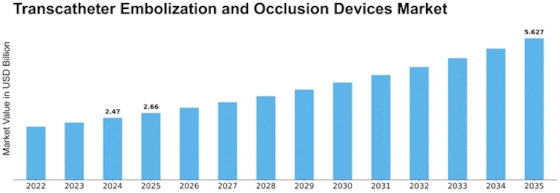

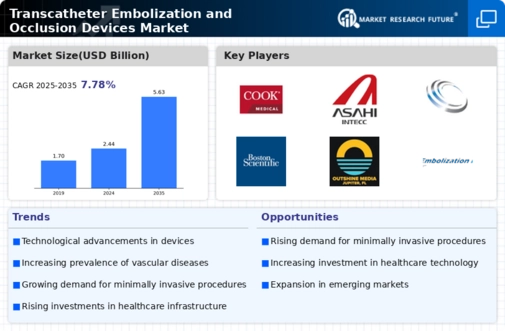
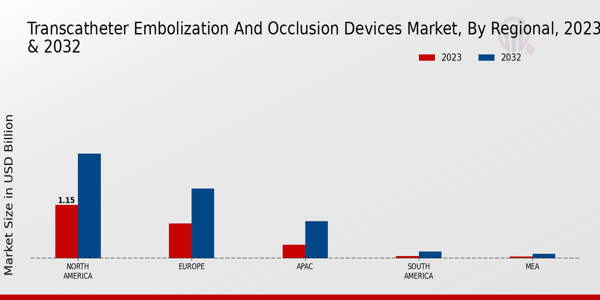


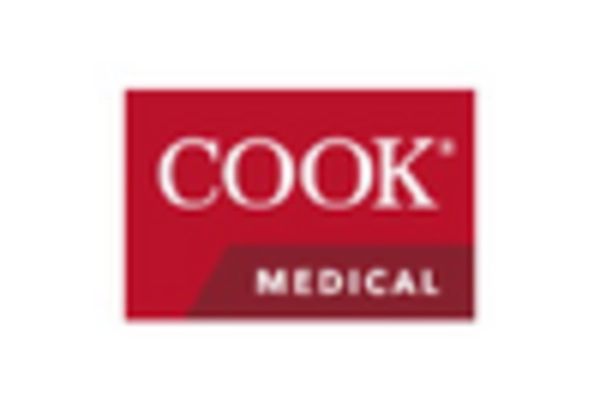


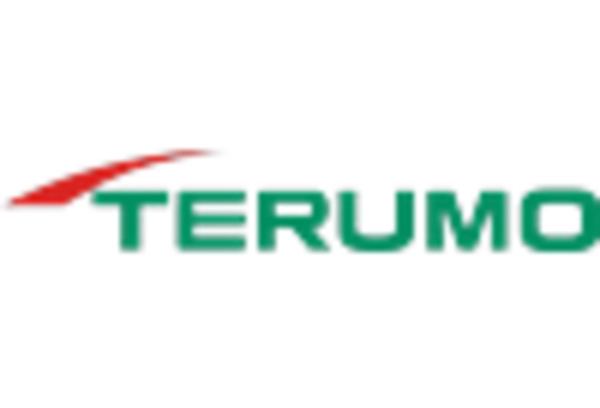

Leave a Comment